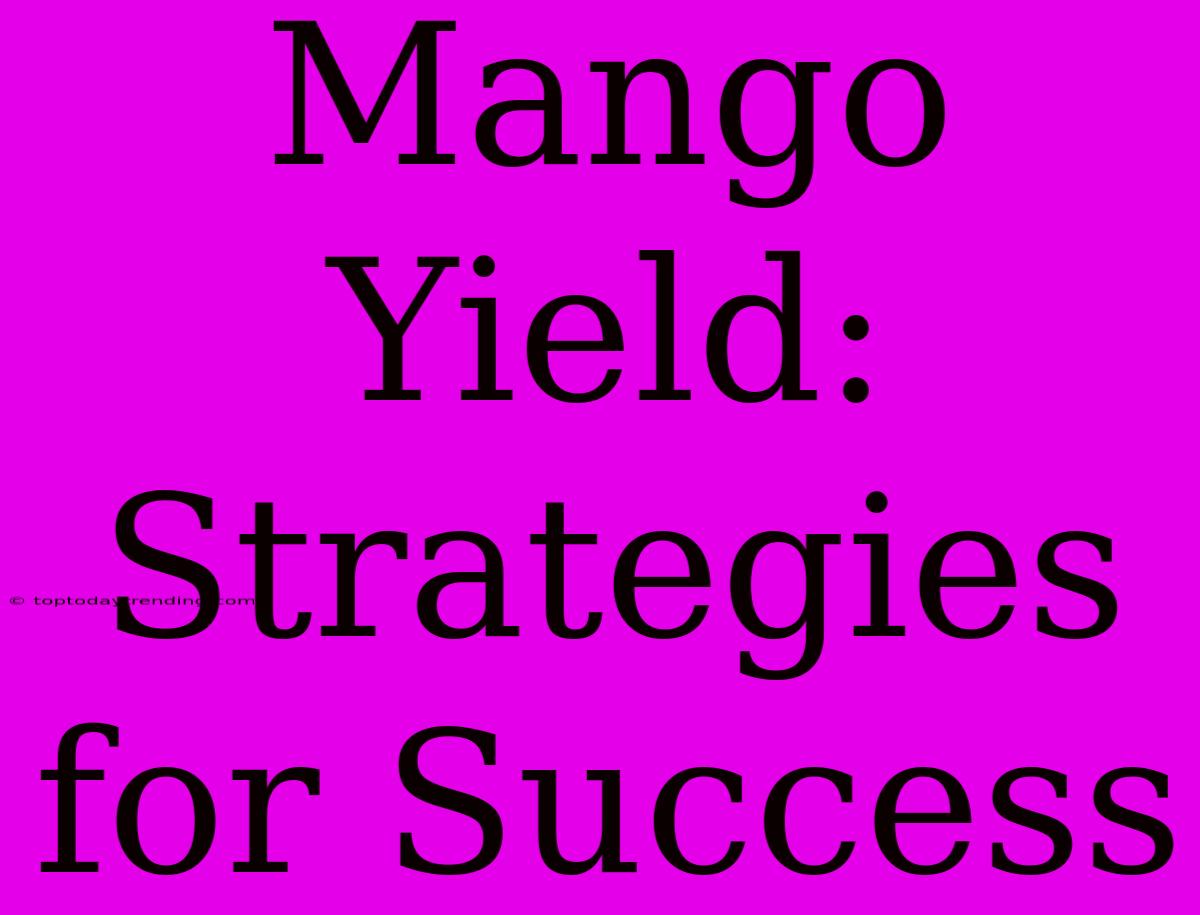Mango Yield: Strategies for Success
Mangoes, the "king of fruits," are a delicious and highly sought-after tropical fruit. Achieving high mango yields requires a strategic approach, encompassing optimal planting practices, proper nutrition, pest and disease management, and timely harvesting. This comprehensive guide will equip you with the knowledge and tools to maximize your mango harvest, turning your orchard into a thriving, productive haven.
Understanding Mango Growth Habits
Before delving into specific strategies, it's crucial to understand the basics of mango growth.
- Flowering and Fruiting: Mango trees typically flower during the winter or early spring, producing fruits that mature over a period of several months.
- Pollination: Mango trees are mostly self-pollinating, meaning that individual trees can produce fruits. However, cross-pollination with other mango varieties often results in better fruit set and quality.
- Fruit Development: Mangoes develop from flowers, eventually forming drupes (stone fruits). The size, shape, and flavor of the fruit vary depending on the mango variety.
Key Strategies for Mango Yield Optimization
1. Planting and Orchard Management
- Variety Selection: Choose mango varieties known for high yields, disease resistance, and suitability to your local climate. Consider factors like fruit size, flavor, and ripening time.
- Spacing: Proper spacing between trees allows for adequate sunlight and airflow, reducing disease and pest problems.
- Soil Preparation: Mango trees thrive in well-drained, fertile soils. Amend the soil with organic matter and conduct regular soil testing to ensure optimal nutrient levels.
- Irrigation: Mango trees require consistent moisture, especially during flowering and fruit development. Implement an efficient irrigation system that ensures adequate water supply without overwatering.
- Pruning: Regular pruning promotes strong, healthy growth, improves fruit quality, and facilitates easier harvesting. Focus on removing dead, diseased, or overcrowded branches.
2. Nutrition Management
- Fertilization: Mango trees have a high demand for nutrients, especially nitrogen, phosphorus, and potassium. Conduct regular soil analysis to identify nutrient deficiencies and adjust your fertilization program accordingly.
- Organic Matter: Incorporate organic matter like compost and manure into the soil to enhance fertility, improve soil structure, and promote beneficial microbial activity.
3. Pest and Disease Management
- Integrated Pest Management (IPM): Employ a combination of biological, cultural, and chemical control methods to minimize pest damage and disease outbreaks.
- Monitoring: Regularly inspect your mango trees for signs of pests and diseases. Early detection and intervention are key to preventing significant yield losses.
- Cultural Practices: Practices like proper sanitation, pruning, and irrigation can help prevent pest and disease problems.
- Organic Control: Use natural insecticides and fungicides whenever possible.
4. Harvesting and Post-Harvest Management
- Timing: Harvest mangoes when they reach their peak ripeness, as determined by color, firmness, and aroma. Overripe mangoes are more prone to damage and spoilage.
- Handling: Handle mangoes carefully to prevent bruising. Store them in a cool, dry place to extend their shelf life.
5. Additional Tips for Success
- Pollination: If you have multiple mango varieties, consider planting them close together to enhance cross-pollination.
- Fruit Thinning: Thinning fruits when necessary can improve the size and quality of remaining fruits.
- Climate Control: Consider using shade netting during hot weather to protect trees from excessive sun stress.
Conclusion
Maximizing mango yield requires a well-rounded approach that considers all aspects of the plant's life cycle. By implementing these strategies, you can significantly enhance your mango orchard's productivity, leading to a bountiful harvest of delicious and high-quality fruits. Remember, consistency in your management practices is key to achieving long-term success.

